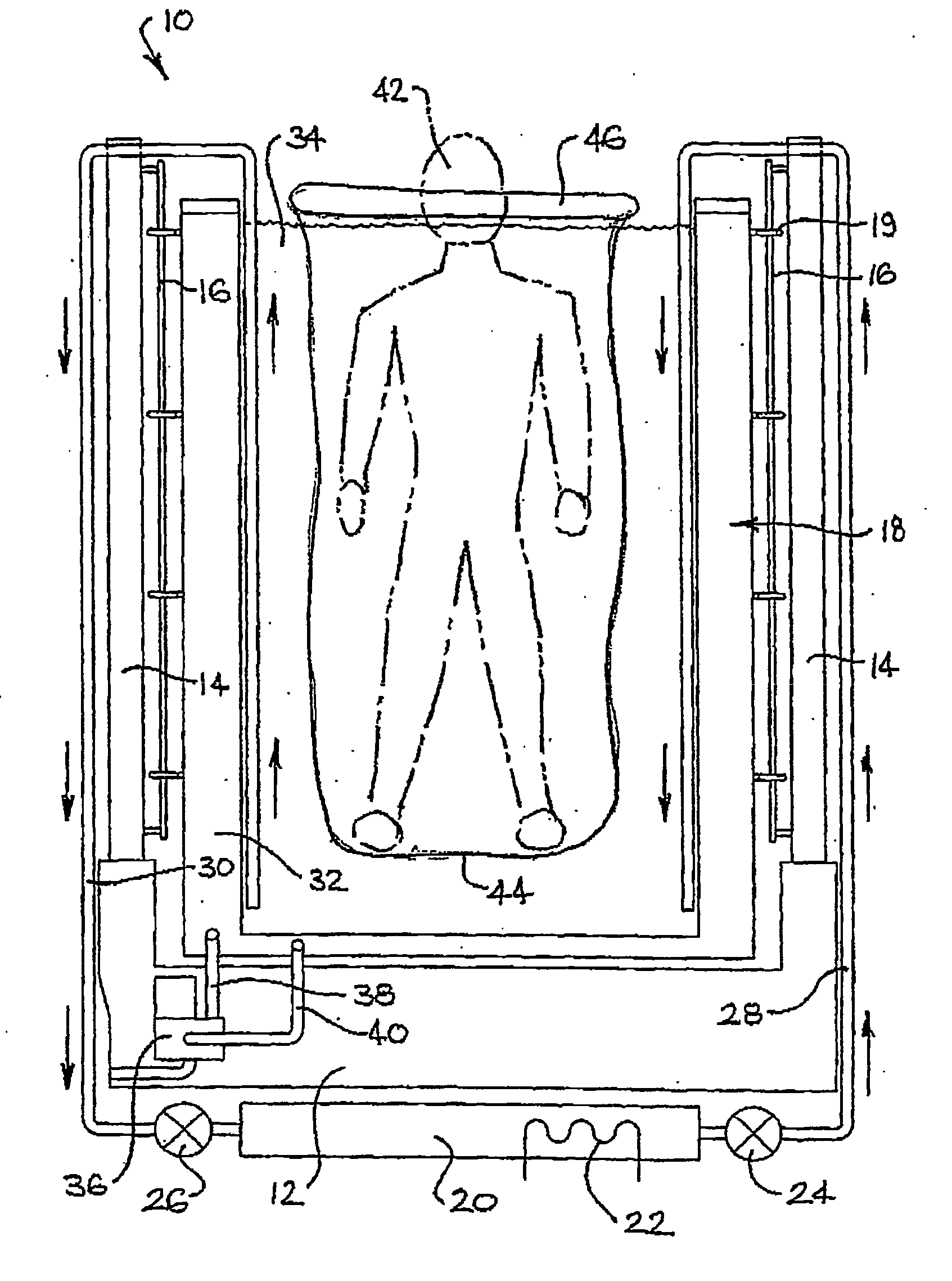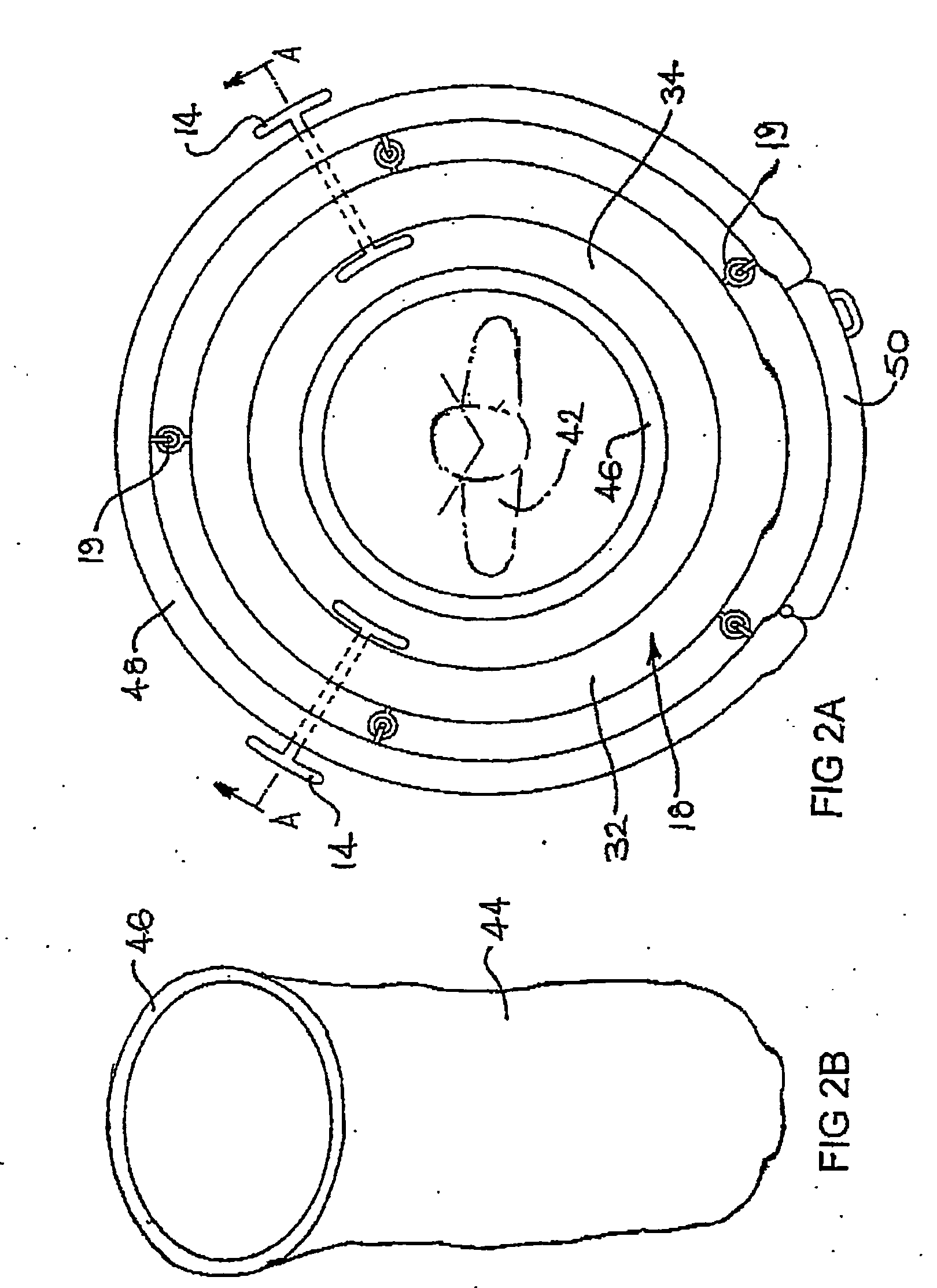Hydrotherapy Vessel
a technology for hydrotherapy and vessels, applied in the field of hydrotherapy vessels, can solve the problems of difficult access, difficult installation into modern buildings, and exacerbated problems
- Summary
- Abstract
- Description
- Claims
- Application Information
AI Technical Summary
Benefits of technology
Problems solved by technology
Method used
Image
Examples
Embodiment Construction
[0092] An exemplary embodiment of the apparatus for providing a hydrotherapy vessel is shown generally at 10FIG. 1. In the preferred exemplary embodiment illustrated in FIG. 1, the main structural components are the base 12 and upright members 14. Support rails 16 are fixed to the upright members 14 allowing attachment of the vessel liner 18. The liner 18 is watertight, and because it is manufactured from a flexible material is able to collapse flat. Water is stored in a tank 20 having a heater 22 to preheat water before use. Water in the tank is pumped into the vessel by the pump 24 and conduit 28. Conversely, water may be removed from the vessel by the pump 26 via the conduit 30. The liner is of a hollow construction having a cavity 32 allowing water or air to be pumped into or removed from the liner via the pump 36 and conduits 38 and 40. The effect of pumping air or water into the cavity 32 is to increase the rigidity of the wall, leading to movement of the liner in an upward di...
PUM
 Login to View More
Login to View More Abstract
Description
Claims
Application Information
 Login to View More
Login to View More - R&D
- Intellectual Property
- Life Sciences
- Materials
- Tech Scout
- Unparalleled Data Quality
- Higher Quality Content
- 60% Fewer Hallucinations
Browse by: Latest US Patents, China's latest patents, Technical Efficacy Thesaurus, Application Domain, Technology Topic, Popular Technical Reports.
© 2025 PatSnap. All rights reserved.Legal|Privacy policy|Modern Slavery Act Transparency Statement|Sitemap|About US| Contact US: help@patsnap.com



